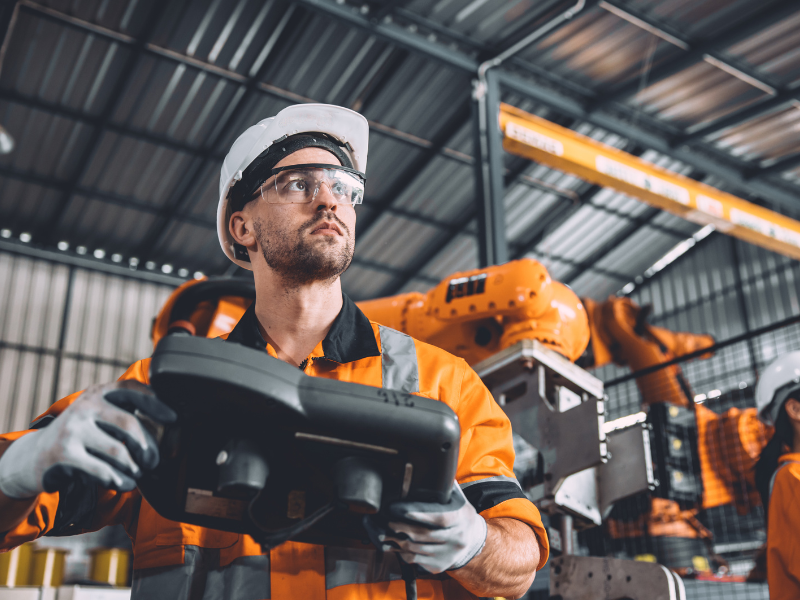Download our CMMC Guide for Manufacturers
Read common questions manufacturers raise about CMMC and take advantage of a list of valuable CMMC resources with this download.

According to a 2022 McKinsey & Company article, the concept of Industry 4.0 really took off in 2019, although it first appeared in conversations around 2011. The idea is built on what are considered the first three industrial revolutions and the disruptive powers that enabled those revolutions. The first was based on steam, the second one electricity, and the third on automation and machinery. The newest industrial revolution is based on the rise of what the article calls “cyberphysical systems.” IBM defines it slightly differently. According to IBM the fourth industrial revolution is about “increasing automation and the employment of smart machines and smart factories, informed data helps to produce goods more efficiently and productively across the value chain.”
However you define the Industry 4.0, the reality is that most manufacturers rely far more on the Internet of Things (IoT) and smart machines than they ever have before. There are advantages to this connectivity, of course. However, this connectivity is also what leads to the vulnerability of data and, in regard to the upcoming CMMC 2.0 rule, the vulnerability of Controlled Unclassified Information (CUI).
Automation, AI, and the Internet have become such large forces in manufacturing plants (and in our lives) that it may take a moment to realize all of the spaces on a plant floor where these modern technologies are used. Here are a few examples.
Internet of Things (Iot): Usage of the Internet of Things can help plant managers detect problems with machinery before those problems become crippling enough to stop productivity. IoT can also be used to measure the productivity or output of a machine. Many plant floors now utilize sensors on machinery to monitor a wide variety of factors including temperature, vibrations, pressure, torque, and more.
Cloud Computing: The Cloud has become a tool in many business toolboxes. Manufacturers may store their ERP in the cloud, for example. Machine software can also be hosted in a cloud, making updates to a CNC machine as painless as a software update on a computer.
Big Data: Most businesses today, whether in the B2B or B2C marketplace, utilize what is called big data. Manufacturers, in addition to collecting all of the information mentioned above about equipment output and condition, also likely maintain inventories, customer order histories, and more.